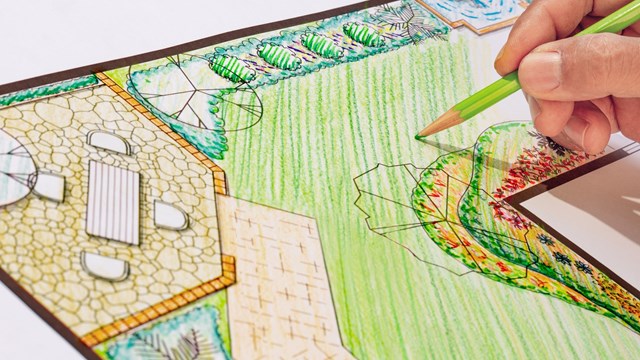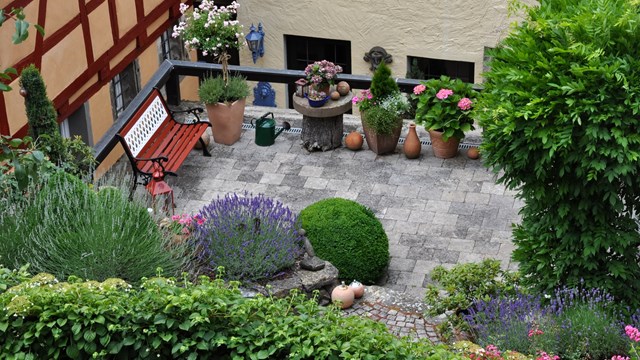Tastes and styles change with the decades—and sometimes with just the seasons—and what is considered fashionable now may seem hopelessly dated in just a few years. (Just look at bell bottoms.) That said, innovations and re-imaginings in residential architecture and design are constantly coming onto the market, and being disseminated throughout housing markets across the country by armies of developers and their crews.
Just how architectural trends start is, of course, something of a mystery. Once upon a time, it was influential mavens like New York City’s Lady Astor deciding that green would be the color for the year. But there is some method to the madness. “I think a lot of it is industry-related, a lot of it is [driven by] technology,” says Kyle Page, an architect and principal at Sundial Studios in New York City. For example, the current emphasis on sustainability might drive style, and there are technological and material capabilities now that were impossible even five years ago. “I also look at trade magazines. We visit [brand] reps, and reps visit us to explain new product lines, new technology, and how products and systems are evolving.”
That said, trends are about what’s in style, and what’s in style is driven by aesthetic concerns—and those concerns are often inspired elsewhere. “We attend the International Contemporary Furniture Fair (ICFF) every year, and it’s fun to visit,” Page says. “I describe it as similar to going to an art gallery; eighty percent of it is neither here nor there, ten percent of it really bothers me and I think it’s off-target, and ten percent of it is ideas that really excite me.” For Page and professionals like him, those ideas, of course, are ultimately what drive trends.
Let’s take a look at some ideas and innovations that are trending at the moment, both in the Windy City and elsewhere.
Durability and Ease of Use
“On the exterior side of it, durability is the key thing,” says Matt Tinder of the American Institute of Architects in Washington, D.C. “People want more bang for their buck. They want to be able to manage their home with the least amount of work. They don’t want to have to address a lot of issues every year. That’s the big thing that we’ve seen.”
This means better materials, a greater emphasis on function over form, and a push toward simplicity. But, of course, “There has to be a bit of luxury in it,” says Dan Baigelman, an architect with Full Circle Architects, located in Highland Park. “It has to have the right amenities. For a lot of buildings, the fitness center is now more important than the lobby. I’m seeing more pools in residential buildings. Rooftop dog runs are a must now.”
“Most of my work involves the restoration of landmarked buildings built in the late 19th century through the early 20th century,” says Scott Henson, owner of the eponymous Scott Henson Architect LLC. “Buyers into these condo and co-op buildings appreciate the strength and stability projected by these classic façades.”
Indeed, those classic façades are the picture of durability; they’ve been in use for over a century in some cases. According to Henson, “When designing new buildings for developers, we draw upon classic proportions, materials and details without copying styles or trends from the past, to essentially create new timeless modern façades that project the strength and stability that buyers want.” Baigelman agrees, adding, “There’s greater intricacy in the architectural detail in pre-war construction – the people who like these buildings don’t mind the smaller spaces.”
Additionally, “There was a phase going into the recession wherein exposed structural steel was often used to give buildings a contemporary look,” says Baigelman, although he speculates that, due to subsequent construction slowdowns and tougher energy conservation codes, this receded somewhat in the early 2000s. “It’s difficult to build with that exposed steel right now, as it doesn’t thermally stand up to current energy standards. That type of metal work is currently confined to canopies and the like.” However, Baigelman continues: “A lot of new buildings are using exposed metal in paneling, or curtain walls. This involves a thin sheet of metal masking rigid installation; it holds up to the aforementioned energy codes, and is becoming increasingly popular in new construction.”
Ease of use is another trend. Technology has driven this one, because so much these days can be done automatically, remotely, or by using your smartphone. “There’s been a huge advance in home automation,” Tinder says. “We’re talking about smart thermostats and other devices that regulate the climate inside of a home, windows that automatically shade, and things of that nature. You walk in the room, the lights go on; you leave the room, the lights go off. A lot of these things have been around for a long time, but we’ve never really seen it in residential spaces in the way we’re seeing it right now. Again, it’s all back to ease of use. Whatever’s easiest for the homeowner is really taking off.”
Multi-Generational Housing
Changing demographics have also affected the housing market. Baby boomers, both the largest and the wealthiest generational cohort in the country, are retiring en masse, while millennials are increasingly living at home after graduation. This has had an impact on real estate design trends.
“We’ve also got an increase in multi-generational habitations,” says Tinder. “We’ve got elderly parents moving back home with their adult children, we’ve got adult children who are starting their own families and buying their own homes later in life, so we’re seeing a big increase in multi-generational living. And it’s having an impact on design, because people want to be able to handle whatever living situations they’re confronted with, whether it’s taking in an elderly parent, or allowing your adult children to live in your house. They want to be able to do that easily, if possible.”
As real estate development is driven by economic factors, there is now a radical shift in thinking on what Americans want in terms of housing. “Development and the market often really dictate how things get built on a large scale,” Tinder explains. “Going back, consider the concept behind Levittown tract housing, the suburbs and its growth. After World War II, the American Dream was that everyone has a single-family home with a white picket fence and a yard and all that. That’s something we’re re-thinking right now in this country.” According to Tinder, this translates first into the increase in development in cities rather than suburban areas; and second, the type of new construction being built there.
“More people are moving to cities, and we’re seeing more older people moving to cities, whereas 30 years ago they were moving out of cities,” Tinder says. Too, there are many more older people than there were a generation ago, and their net worth is considerably higher. “So you have people with higher levels of income moving in, and they’re utilizing space however they can get it. Developers and architects are certainly at the forefront of that. They’re reusing spaces that were once factories or office buildings or hotels, and transforming them into multifamily housing. It’s different from city to city, but people want to be close to all the amenities, public transportation, and restaurants, because then they don’t need a car. Everything they need is right in their own neighborhood. And what our data has shown is that it’s the older people who are moving into the cities – the empty nesters.”
The reliance on public transportation rather than automobiles is tied to the next trend.
Sustainability
Sustainability, or the so-called ‘green’ movement, can save both the planet and the pocketbook. This trend began during the energy crisis of the 1970s, and then stalled out when the oil shortages stopped. That sustainability was preached by the unpopular then-President Jimmy Carter did not help the movement. This abandonment of the green movement has hurt us, Tinder says: “I think we’d be in a better place now if that movement had continued to grow and strengthen. I don’t want to call it a misstep, but I think we’d be in a better place with the environment if we’d continued on the path to sustainability that we started on in the 1970s.”
In recent years, however, the appeals of the green movement have become en vogue. It’s rare when taking the moral high ground can help balance a budget. So the trend on sustainability appears here to stay.
“Sustainability is a big issue, and pairing with that we’re seeing a lot of growth in healthy materials,” says Tinder. “They go hand in hand. So there’s an increase in products like paint that has no VOCs, there’s no chemical off-gassing, and other materials that are sourced more sustainably, and don’t create as large a footprint on the environment. Healthy living, sustainability, lowering utility costs: those things mesh very, very nicely together.”
On the ground, this means an emphasis on restoration and repurposing of spaces—as with the conversion of urban factories and office buildings into residential housing mentioned earlier.
“My firm has worked on a number of adaptive reuse, or building repositioning projects,” says Henson. “Typically, these are older industrial or commercial buildings converted for residential use. There are many environmental benefits of reusing old buildings as they save on expending additional energy resources during demolition of the old building and the construction of a new one. Besides the character and feeling of original materials and details embedded in an older building, owners and potential buyers appreciate that they are contributing to the sustainable stewardship of our environmental resources.”
Awareness
Simply put, people know more about home design now than they ever have before. This, too, informs trends.
“The internet, and the access to information about design, has really put it in front of more people who would have otherwise not known about specific design concepts,” Tinder says. “There are online resources for people who are interested in designing their own spaces and doing their own projects. We’ve got HGTV—a whole network devoted to it, basically allowing the everyday person to jump into building. It’s really enlightened people to the benefit of thoughtful design. And people are generally less tied down to previous notions of what a home should be or what a space should be like.”
In other words, the trend for next year is wide open.
Greg Olear is a novelist and freelance writer, and a frequent contributor to The Chicagoland Cooperator.







Leave a Comment